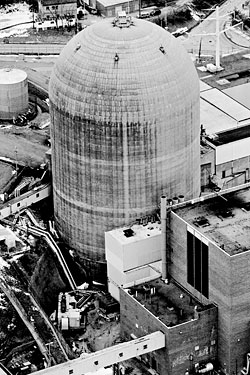
The sirens are loud, very loud. And constant. Like a fire siren, but higher pitched. There are a bunch of them, all over. The ones near me, I know exactly where they’re coming from—behind my house, so they sound a certain way. Sometimes when there’s a drill, you’ll see kids get worried—kids even as old as maybe twelfth grade—and they’ll call their fathers to see what’s happening. They’ve heard it before, but you’re walking down the street and you hear it and no one’s around to tell you it’s okay.
If I looked out and saw lights go on and people getting in their cars and I turned on the radio to find out there was an actual disaster, I would just lick my finger, see which way the wind’s blowing, and head out. There is no path out—it would be total chaos. I’ve lived here over twenty years now. You move into a place with a nuclear plant in your backyard knowing it. You want to be ready. But really, I spend very little time worrying. Disaster can strike anywhere. There’s a lot more going on than the nuclear plant we have next door. The world is chaos.
Cortlandt Manor construction worker Rory Knapp, whose house sits less than ten miles from Indian Point—the highest-risk nuclear plant in the country, according to the U.S. Nuclear Regulatory Commission—which in turn is 35 miles from the city.
As told to Noreen Malone